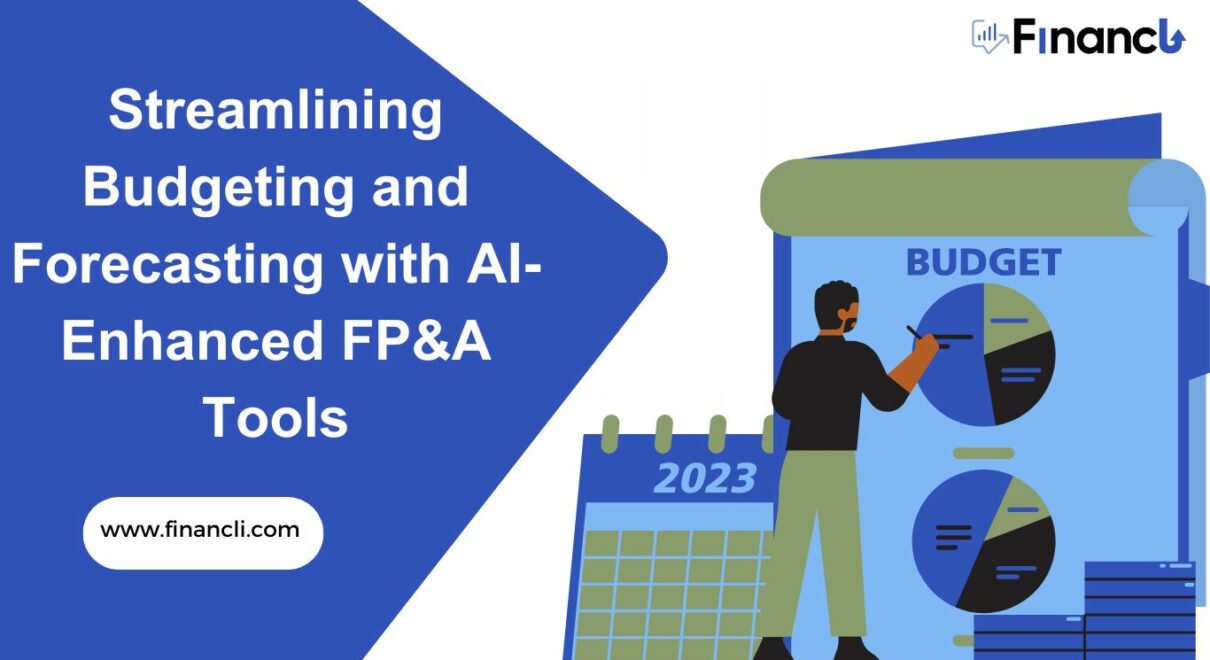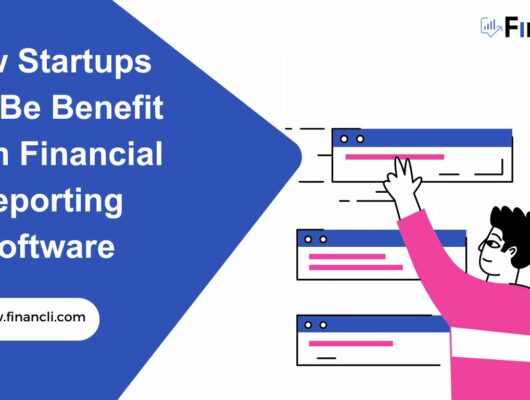Budgeting & Forecasting Redefined by AI FP&A Tools
In this article, we will delve into the profound impact of cutting-edge Financial Planning and Analysis, FP&A tools empowered by Artificial Intelligence (AI). We aim to explore how these advanced technologies are reshaping budgeting and forecasting processes, fostering efficiency, precision, and strategic acumen within the contemporary business milieu.
FP&A tools

FP&A tools are specialized software solutions designed to streamline financial planning and analysis processes within organizations. These tools aim to enhance efficiency by improving tasks such as financial forecasting, budgeting, and analysis, while also ensuring the accuracy and reliability of financial data used for decision-making.
Furthermore, FP&A tools provide deeper insights into financial performance and key business drivers, facilitating collaboration among finance teams and other stakeholders. They also play a pivotal role in ensuring adherence to regulatory requirements and internal financial policies, all while bolstering strategic planning efforts with precise financial forecasts and scenario analyses.
In today’s fast-paced and ever-evolving business landscape, agility and precision are crucial for success. Therefore, finance teams are increasingly turning to AI-enhanced Financial Planning and Analysis (FP&A) tools to streamline budgeting and forecasting processes, marking a significant advancement in financial management. These tools have intuitive interfaces and are easy to use.
Key Features of FP&A Tools
Single Source: FP&A tools serve as a centralized platform for financial data and analysis, ensuring consistency and accuracy across the organization’s operations. Moreover, they also excel as analysis software and for financial modeling.
Real-Time Data: These tools provide access to up-to-date financial information, facilitating timely decision-making and strategic planning based on the latest insights.
Corporate Performance Management: FP&A tools aid in monitoring and managing performance against strategic objectives, fostering continuous improvement within the organization.
Customizable Dashboards: Users can personalize dashboards to visualize key metrics and trends relevant to their specific needs and objectives. FP&A tools excel as perfect visualization tools for this purpose.
Scenario Planning: FP&A tools enable the modeling of various scenarios, allowing organizations to prepare for different eventualities and make informed decisions accordingly.
Real-Time Collaboration: These tools facilitate seamless collaboration and communication among stakeholders, promoting transparency and alignment in financial planning and analysis processes.
Characteristics of FP&A Tools for Budgeting: Enhancing Financial Planning Efficiency

Financial Planning and Analysis (FP&A) tools are integral for organizations aiming to streamline their budgeting processes. In this section, we will outline the primary features provided by FP&A tools that are specifically customized for budgeting:
Forecasting Capabilities:
FP&A tools provide sophisticated forecasting capabilities that allow organizations to predict future financial performance accurately. Leveraging historical data, market trends, and strategic objectives, these tools enable users to generate forecasts for revenue, expenses, and cash flow with precision. Advanced algorithms and predictive analytics algorithms help in identifying patterns and trends, providing valuable insights for budget planning.
Additionally, forecasting capabilities allow users to compare actual results with projected outcomes, identify gaps and opportunities, and adjust budgets accordingly.
Scenario Analysis:
One of the standout features of FP&A tools is their ability to conduct scenario analysis. Users can model various scenarios by adjusting key variables such as sales volume, pricing, and market conditions. Through simulating various scenarios, organizations can evaluate potential outcomes and make well-informed decisions regarding resource allocation, risk mitigation, and strategic priorities. This feature empowers finance teams to plan for uncertainty and adapt budgets accordingly and proactively.
Moreover, scenario analysis enables users to test the impact of different assumptions and hypotheses, evaluate the sensitivity of key drivers, and perform what-if analysis.
Collaborative Planning:
FP&A tools facilitate collaborative budget planning by providing centralized platforms where finance teams and department heads can collaborate in real-time. Users can access and update budget templates, share comments and feedback, and track the progress of budget reviews and approvals. This collaborative approach promotes transparency, accountability, and alignment across the organization, leading to more accurate and comprehensive budget plans.
Furthermore, collaborative planning fosters a culture of trust and engagement among stakeholders, improves communication and coordination, and reduces conflicts and errors.
Real-Time Reporting:
Real-time reporting capabilities enable organizations to monitor budget performance and track key metrics dynamically. FP&A tools generate customizable reports and dashboards that provide insights into budget variances, trends, and KPIs. With access to up-to-date financial data, decision-makers can quickly identify areas of concern, make informed adjustments to budgets, and respond promptly to changing business conditions. Real-time reporting enhances agility and responsiveness in financial planning processes.
Besides, real-time reporting allows users to drill down into the details, slice and dice data, and create ad-hoc reports as needed.
Integration with ERP Systems:
For streamlined data flow between financial planning and accounting processes, seamless integration with Enterprise Resource Planning (ERP) systems is essential. FP&A tools often offer built-in connectors or APIs that allow them to synchronize data with ERP systems, ensuring consistency and accuracy in financial information. This integration streamlines workflows, eliminates manual data entry errors, and facilitates a single source of truth for financial data across the organization.
Finally, integration with ERP systems enables users to leverage existing data sources, avoid data duplication, and ensure compliance with financial standards and regulations.
In short, FP&A tools offer a range of key features specifically designed to enhance efficiency and effectiveness in financial budgeting processes. From forecasting and scenario analysis to collaborative planning and real-time reporting, these tools empower organizations to make informed financial decisions, adapt to changing business conditions, and drive long-term success. By leveraging the capabilities of FP&A tools, organizations can optimize their budgeting processes and achieve greater agility, accuracy, and strategic alignment in financial planning activities.
Essential Attributes of FP&A Tools for Financial Forecasting: Empowering Data-Driven Decision-Making
Financial Planning and Analysis (FP&A) tools work best as financial forecasting tools. In this section, we will discuss the key features of FP&A tools tailored specifically for financial forecasting:
Advanced Data Analysis:
FP&A tools leverage advanced data analysis techniques to analyze historical financial data, market trends, and other relevant factors. Through data visualization and statistical modeling, these tools identify patterns, correlations, and anomalies, providing valuable insights for forecasting future financial outcomes.
Additionally, advanced data analysis helps users to understand the drivers and risks of financial performance, identify opportunities and threats, and optimize financial strategies.
Scenario Planning:
One of the most powerful features of FP&A tools is scenario planning. Users can create multiple scenarios by adjusting variables such as revenue projections, cost structures, and market conditions. By simulating different scenarios, organizations can assess the potential impact of various business decisions and external factors on their financial performance, allowing for more informed and proactive decision-making.
Moreover, scenario planning enables users to test the robustness and resilience of their financial plans, evaluate the trade-offs and synergies of different options, and perform sensitivity and contingency analysis.
Rolling Forecasts:
FP&A tools enable organizations to implement rolling forecasts, which involve continuously updating and revising forecasts based on the latest financial data and market conditions. This iterative approach allows organizations to adapt quickly to changing business dynamics and make timely adjustments to their financial plans, ensuring agility and responsiveness in forecasting processes.
Furthermore, rolling forecasts help users to align their financial plans with their strategic objectives, monitor and measure their progress, and improve their forecast accuracy and reliability.
Collaboration and Stakeholder Engagement:
FP&A tools provide collaborative platforms where finance teams, department heads, and other stakeholders can collaborate on financial forecasts. Users can share data, insights, and assumptions, solicit feedback, and align forecasts with strategic objectives. This collaborative approach fosters transparency, accountability, and cross-functional alignment, leading to more accurate and robust financial forecasts.
Besides, collaboration and stakeholder engagement enhance the buy-in and ownership of financial forecasts, improve communication and coordination, and reduce conflicts and errors.
Integration with External Data Sources:
FP&A tools integrate with external data sources such as market data providers, economic indicators, and industry benchmarks. By incorporating external data into financial forecasts, organizations can enrich their analyses and enhance the accuracy of their predictions. This integration enables organizations to stay informed about market trends, competitive dynamics, and regulatory changes that may impact their financial performance.
Finally, integration with external data sources allows users to leverage existing data sources, avoid data duplication, and ensure data quality and consistency.
In short, FP&A tools offer a range of key features specifically designed to empower organizations to create accurate and actionable financial forecasts. These functionalities include advanced data analysis and scenario planning, rolling forecasts, and collaboration tools. They empower organizations to make well-informed decisions, adapt to changing business conditions, and achieve their strategic objectives. By leveraging the capabilities of FP&A tools for financial forecasting, organizations can enhance their agility, resilience, and competitiveness in today’s dynamic business environment.
Benefits of FP&A Tools for Budgeting and Financial Forecasting

In today’s dynamic business environment, the utilization of Software Tools in Financial Planning and Analysis (FP&A) has become a critical tool for Business Planning and financial decision-making. These tools provide a comprehensive set of features designed to optimize the budgeting and financial forecasting process, thereby enhancing efficiency and accuracy.
In this section, we will delve into the detailed benefits:
Enhanced Accuracy and Audit Trail:
FP&A tools provide robust Financial Analysis capabilities, leveraging advanced algorithms and data analytics to deliver Accurate Insights into financial performance. They maintain a comprehensive Audit Trail, ensuring transparency and compliance with regulatory requirements.
Additionally, enhanced accuracy and audit trail help users to avoid errors and discrepancies, ensure data integrity and security, and support audit and review processes.
Dynamic Planning and Scenario Modeling:
With FP&A tools like Financli, organizations can perform Scenario Modeling and Dynamic Planning, allowing them to assess various business scenarios and adapt their financial strategies accordingly. This enables Accurate Forecasting and empowers Finance Leaders to make informed decisions.
Moreover, dynamic planning and scenario modeling help users to anticipate and respond to changing business conditions, explore alternative courses of action, and optimize resource allocation and risk management.
Real-Time Insights and Visualization:
FP&A tools offer Real-Time Insights and Visualization capabilities through Interactive Dashboards and Custom Reporting Features. This enables Finance Professionals to gain valuable insights into key financial metrics and performance indicators, facilitating Data-Driven Decision Making.
Furthermore, real-time insights and visualization help users to monitor and track financial performance. They also assist in identifying trends and issues. Additionally, they aid in creating actionable reports and presentations.
Streamlined Budgeting and Forecasting Process:
By providing a Single Platform for Budgeting and Financial Forecasting, FP&A tools simplify the process. They eliminate the need for manual data entry and version control. This saves Valuable Time and resources for Finance Departments, allowing them to focus on strategic analysis and planning.
Besides, streamlined budgeting and forecasting processes help users to improve efficiency and productivity. They also reduce complexity and errors while enhancing collaboration and alignment.
Scalability and Customization:
FP&A tools such as Financli offers Scalable Solutions with Custom Dashboards and Workflow Automation capabilities. This ensures that organizations of various sizes can customize the software to align with their unique needs and requirements. It ranges from mid-market companies to larger enterprises.
Finally, scalability and customization help users adapt the software to their business needs and preferences. They can automate and standardize processes while also integrating with other systems and applications.
In short, FP&A tools offer a comprehensive solution for Budgeting and Financial Forecasting. They provide Finance Leaders with the tools they need. They also empower Professionals to drive Strategic Decision Making. Additionally, they enable organizations to achieve long-term financial success. These tools are essential for improving Accuracy, streamlining processes, and gaining Real-Time Insights. They play a critical role in enabling organizations to stay competitive and agile in today’s fast-paced business landscape.
Frequently Asked Questions
How To Choose the Best FP&A Platform?
When selecting an FP&A platform, prioritize scalability, integration, user-friendliness, and alignment with business needs. Ensure adaptability and seamless integration with existing systems.
What are the components of FP&A?
The components of FP&A typically include financial planning, budgeting, forecasting, variance analysis, financial modeling, reporting, and decision support.
Conclusion
Incorporating AI-enhanced FP&A tools into financial management processes can yield significant benefits for organizations. By harnessing the power of Artificial Intelligence, these tools enhance the accuracy and efficiency of Financial Models. They also improve overall Financial Health and enable timely Financial Reporting. With features like Adaptive Planning and Scenario Analysis, finance teams can gain valuable insights into potential outcomes. They can then make proactive decisions to drive Financial Performance and achieve long-term success.






